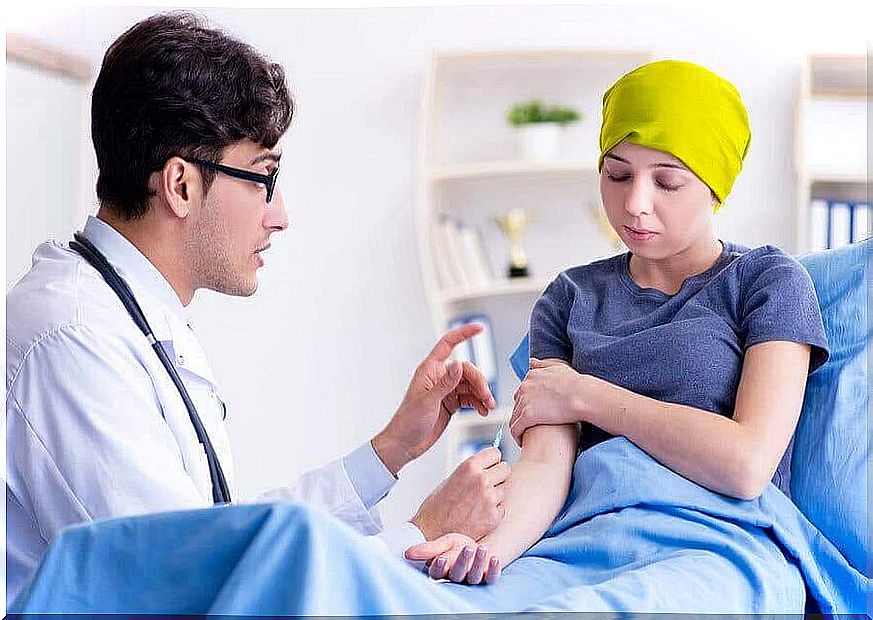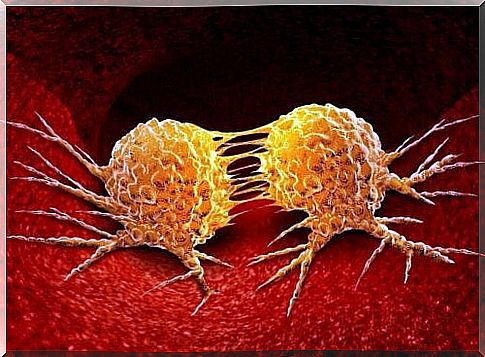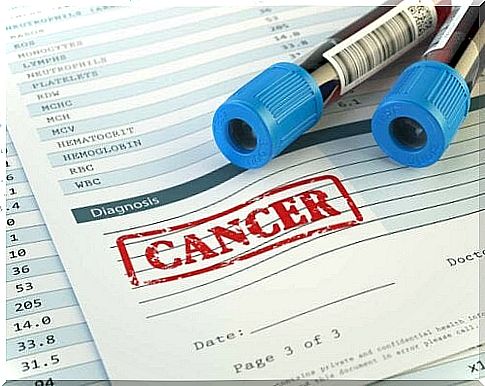How Cancer Develops: A Detailed Explanation

Cancer is a term that refers to a group of diseases characterized by the rapid and uncontrolled proliferation of cells in the body. Have you ever wondered how cancer develops?
This disease develops when the cells that make up an organ undergo changes in their genetic material or in the proteins derived from these genes. At the same time, the origin of these changes can be hereditary or sporadic (spontaneous appearance).
There are substances that are able to speed up the processes, which then lead to a certain type of cancer. These substances are known as carcinogens and are part of the risk factors for suffering from some form of cancer.
How cancer develops
Cancer starts in a cell. This cell, given the change in its functions, escapes biologically imposed controls, divides and then grows uncontrollably in any part of the body. This process is completely linked to genes, because cancer belongs to the category of genetic diseases.
Genes carry the correct instructions to produce the proteins that determine the behavior of every cell in our body. There are genes, proto-oncogenes and genes that suppress cancer.
- Proto-oncogenes are the genes responsible for stimulating cellular division as a fundamental function for life. The development of babies during pregnancy and the healing of wounds both depend on proto-oncogenes.
- Suppression genes, on the other hand, are responsible for counteracting the above processes.
Any change in the balance between the functions of proto-oncogenes and cancer suppressor genes causes irregularities within the cellular control system.
This imbalance can lead to an increase in the production of a protein destined for cell growth. This also causes the proliferation of some kind of abnormal cell at the same time.
Another case can lead to the production of a protein with abnormal characteristics, which cannot repair the damage to a cell. This affects a specific organ.

How cancer develops: risk factors
Cancer is multifactorial in nature. In other words, there are many components that play an important role in the individuals who develop this type of disease. However, science has been able to identify factors that increase the chance (risk) of suffering from at least one type of cancer. These factors are called risk factors.
We can better understand the concept of risk factors by looking at the definition given by the World Health Organization: “ Any trait, characteristic, or exposure of an individual that increases his or her likelihood of suffering an illness or injury .”
From this perspective, the risk factors can be chemical exposure, personal habits, or the work a person does. Experts often consider family history (an immediate family member who has had cancer) as one of the main risk factors for hereditary cancer.
How cancer develops: the mechanisms
In order for the changes that affect the genes responsible for cancer to occur, several processes must take place. Among these processes we can find the following:
- exposure to carcinogens
- spontaneous genetic errors during cell growth
- hereditary genetic mutations
We can refer to the first two processes mentioned above as sporadic cancer, all of which have the same peculiarity. The genetic changes that form their origin depend for 80% on exposure to environmental risk factors such as:
- infections
- radiation
- chemicals
Hereditary cancer
When it comes to hereditary genetic mutations, we can call it hereditary cancer. Hereditary cancer, as the name suggests, is a hereditary condition. It means that family members are at greater risk of developing certain cancers.
Cancer is relatively common. In the United States, it is estimated that one in three people will develop some type of cancer. This means that it is not uncommon for more than one person in the same family to experience cancer.
However, it is important to point out that the fact that there is more than one case of cancer in the same family does not necessarily mean hereditary cancer.
When many cases of cancer appear in the same family, it often has to do with exposure. In other words, the family members are exposed to the same common risk factor, for example tobacco.
With all this in mind, we can say that hereditary cancer includes the following:
- the same cancer appears in more than one family member
- cancer appears at a different age than normal (for example, breast cancer in a 20-year-old woman)
- more than one type of cancer develops in the same person (a woman with breast cancer and ovarian cancer)
- cancer appears in both organs in a pair (both breasts, both ovaries, both kidneys)
- cancer appears in multiple generations of the same family

Resume
The term cancer groups a series of diseases with a common trait. That common feature is the rapid and uncontrolled proliferation of cells in the body. At the same time, it may also be related to environmental factors, lifestyles, and a family history of this disease.









